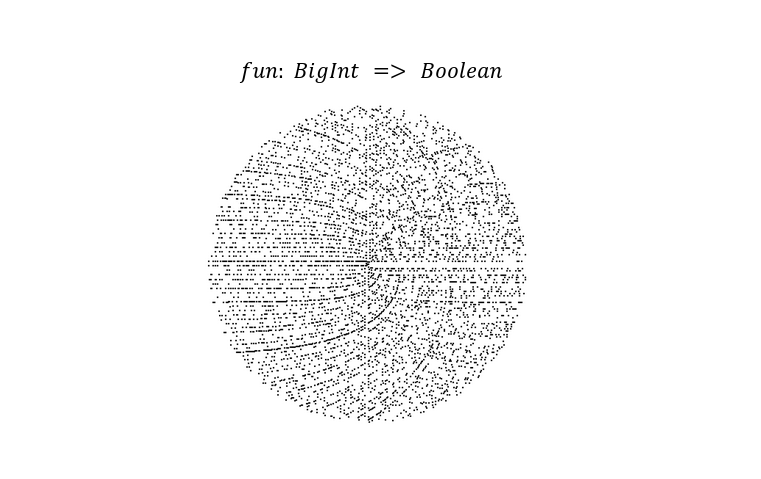genetic predisposition or chance

One of the aspects studied by genetics is heredity. Physiological characteristics, such as eye color, hair color, height, build, predisposition to certain diseases, can be passed on from generation to generation. With this in mind, scientists have also tried to understand whether there are any genetic factors that influence a person's skills. If parents have amazing math skills, for example, will this be passed on to their child? Many scientists are sure that yes, but there is little full-fledged material evidence of this. Sometimes research results indicate the opposite. Scientists from Vanderbilt University Medical Center (USA) studied the DNA of the great composer Ludwig van Beethoven, extracted from his hair, and tried to assess his genetic predisposition to music. How did scientists search for Beethoven's musical gift, what did they find, and is there a connection between genetics and skills? We will find answers to these questions in the scientists' report.
Basis of the study
Over the past decades, genetics and DNA sequencing in particular have reached incredible heights in terms of the information we can obtain about a given biological system. In a recent study “
Genomic analyzes of hair from Ludwig van Beethoven
» Led by Tristan James Alexander Begg from the University of Cambridge, scientists were able to sequence the genome from a strand of Ludwig van Beethoven's hair. This study was conducted to look for a genetic predisposition to some of his documented medical problems. But the authors of the work we are considering today decided to use Beethoven’s DNA sequencing data in order to determine whether there were any genetic factors that influenced the formation of his musical genius.
The scientists note that Dr Begg and his team relied heavily on polygenic indices* (PGI from polygenic index), which reflect a person's genetic propensity for a particular trait, based on the predicted effects of common DNA variants (usually single nucleotide polymorphisms or SNPs from single-nucleotide polymorphism) obtained as a result of the previous genome-wide association search* (GWAS from genome-wide association study).
Polygenic indicator* (PGS from polygenic score) or polygenic index (PGI from polygenic index) is a number that summarizes the estimated influence of many genetic variants on a person's phenotype. PGS in the context of disease risk is called polygenic risk score (PRS from polygenic risk score) or genetic risk assessment. The score reflects an individual's perceived genetic predisposition to a given trait and can be used as a predictor of that trait. PGS provides an estimate of how likely a person is to have a given trait based on genetics alone, without taking into account environmental factors.
Genome-wide association search* or GWAS (from genome-wide association study) is a direction of biological (usually biomedical) research related to the study of associations between genomic variants and phenotypic traits. Genome-wide association search often means only the search for connections between single nucleotide polymorphisms and human diseases, but the term can also be used to apply to other organisms.
This PGI reflects the cumulative effect of a huge number of SNPs scattered throughout the genome, each of which has an individually small effect size, but overall reflects only a portion of the genetic variation (at least for the most complex traits). However, Begg found Beethoven's PGI for cirrhosis to be at the 96th percentile. This led to the conclusion that genetic factors contributed to his severe liver disease, in addition to the effects of alcohol abuse and hepatitis.
Begg's team didn't touch on Beethoven's best-known traits, likely because there wasn't yet a sufficiently informative GWAS of musical talent. However, in a recent GWAS study of 606,825 people of European ancestry, 69 genetic loci* were significantly associated with variation in self-reported ability to synchronize rhythms, as assessed by the question: “Can you clap to the beat of a musical rhythm?”
Locus* in genetics, means the location of a specific gene on the genetic or cytogenetic map of a chromosome.
The variance explained by the sum of all common genetic variants across the entire genome (SNP-based heritability) was 13–16%. A survey like this, consisting of only one question, is hardly a suitable measure of musical talent. However, the study found that PGIs based on this GWAS were predictive of musicality scores (R
2
R
2
from 1 to 3%, which is consistent with other behavioral traits).
In the paper we're looking at today, the scientists calculated Beethoven's PGI and compared it to two sets of data on thousands of modern people who had musical skills. The study used genotype data from 8344 individuals (5648 with musical achievement data) from the Swedish Twin Registry cohort, 6150 individuals from the Vanderbilt BioVU cohort, and Beethoven genome sequence data.
Research results

Image #1
Beethoven's PGI for rhythm timing places him in the 9th percentile for STAGE (1A) and 11th percentile for BioVU (1B). This indicates a relatively low PGI compared to both reference cohorts. Comparison of the Beethoven data with the principal components of the cohorts suggests that the results are unlikely to be influenced by differences in background.
At first glance, the pattern of results may seem somewhat puzzling. On the one hand, this PGI (as in previous work) predicts musical achievement and musicality status (1C, 1D). On the other hand, Beethoven, one of the most famous musicians in history, scored an unremarkable score, ranking between the 9th and 11th percentile based on contemporary samples. However, the scientists say the discrepancy is not entirely unexpected.
First, a typical PGI captures only a portion of the genetic effects, including only common and non-rare DNA variants, and predictive power is highly dependent on the statistical power of the GWAS finding and the heritability of the target trait (in music-related twin studies, traits showed moderate heritability in 42%). The predictive value of PGI increases with larger GWAS samples and for traits with higher heritability.
Second, genetic associations reflect culture-specific interactions between underlying genetic factors and environmental influences. GWAS results for modern Western society may not be universally applicable across all time points and individual regions.
Third, as a population-level approximation, PGIs do not necessarily provide accurate predictions at the individual level. Inevitably, many people will score high on such a PGI but low on the target trait, and vice versa. On 1C And 1D shows great variability and overlap in PGI at different levels of musical achievement and musical involvement.
In addition to these general problems with PGI, the results obtained here may relate to specific trait selection, limited by the current availability of only one significant GWAS in this area. Musicality is not a single trait, but is better conceptualized as a multicomponent skill set that includes a mixture of genetic contributions, some of which are common to all traits, others uniquely influencing specific aspects, limiting the informativeness of any individual PGI.
The researchers note that the musical trait in the GWAS (the question “can you clap to the beat of music?”) is unlikely to be well distinguished in the high range of musical creativity, since a small proportion of people answer the question in the negative. Therefore, it is possible that the results would have been different for a GWAS trait PGI more capable of capturing differences across a wide range of musical skills.
First of all, it is important to remember that human traits, including musical ability, are not determined solely by genes or environment, but rather are shaped by the complex interactions of the two. Genetic influences, such as those captured by PGI, are probabilistic in nature, not deterministic causes that shape a person's future.
DNA analysis of Beethoven, a man who lived more than two centuries ago, clearly demonstrates the problematic nature of PGI techniques. Obviously, it would be wrong to conclude from the results of PGI research that Beethoven's musical abilities were not exceptional. Caution must be exercised when using PGI for individual-level predictions, including historical/famous figures, as with any other factor with low predictive value. Despite such challenges, PGIs are useful for group-level analysis as research tools to provide insight into genetic risks across the lifespan and their interactions with the environment.
For a more detailed understanding of the nuances of the study, I recommend taking a look at scientists' report And Additional materials to him.
Epilogue
In the work we reviewed today, scientists used DNA sequencing data from Ludwig van Beethoven to try to discern the connection between genetic characteristics and his musical genius.
Scientists used Beethoven's DNA to calculate a polygenic score as an indicator of his genetic predisposition to rhythm synchronization. For comparison, data from several hundred thousand modern people was used. Beethoven, while one of the world's most distinguished composers, had an unremarkable polygenic score for overall musicality compared to other individuals.
The authors of the study note that the results of their work do not indicate that the polygenic indicator is a reliable method for assessing certain human traits. Quite the contrary, this study is a clear example of the fact that genetic prediction is an extremely complex process that takes into account many factors. In other words, looking at a person's genetic information cannot predict his future.
Yes, an individual's genetic makeup plays a role in their susceptibility to certain skills or diseases. Previous studies have shown that the average heritability, which is the proportion of individual differences explained by all genetic factors, is 42% for musicality.
Modern technologies and the availability of huge databases (for example, genetic information) make it possible to conduct this type of research with much greater accuracy. Another important conclusion of this work is the fact that the environment plays an important role in the formation of human skills.
Genetics is an extremely important science, but it is not a crystal ball or tarot cards. The analysis of genetic information, like the analysis of any other information, does not tolerate assumptions and abstract conclusions. However, the technological developments we are seeing right now may in the future expand the scope of genetics and perhaps allow us to obtain 100% accurate information about a person's future in terms of medicine and skills.
A little advertising
Thank you for staying with us. Do you like our articles? Want to see more interesting materials? Support us by placing an order or recommending to friends,
cloud VPS for developers from $4.99
,
a unique analogue of entry-level servers that we invented for you:The whole truth about VPS (KVM) E5-2697 v3 (6 Cores) 10GB DDR4 480GB SSD 1Gbps from $19 or how to properly share a server?
(options available with RAID1 and RAID10, up to 24 cores and up to 40GB DDR4).
Dell R730xd is 2 times cheaper in the Maincubes Tier IV data center in Amsterdam? Only here 2 x Intel TetraDeca-Core Xeon 2x E5-2697v3 2.6GHz 14C 64GB DDR4 4x960GB SSD 1Gbps 100 TV from $199 in the Netherlands! Dell R420 – 2x E5-2430 2.2Ghz 6C 128GB DDR3 2x960GB SSD 1Gbps 100TB – from $99! Read about How to build a corporate infrastructure. class using Dell R730xd E5-2650 v4 servers costing 9,000 euros for pennies?





